I spent Saturday sauntering around the 43rd Annual All British Field Meet at Portland International Raceway.
More than 800 British cars were on display.
My ride out represented a mix of old and new. SCMer Dave Stewart picked me up in his lovely dark blue MGA Twin Cam, but he was wearing a Tesla jacket. His daily driver is a Tesla Model S.
This was my first time in a convertible sports car in months, and it was good to remember what the world looks, feels and smells like from the cockpit of a 61-year-old sports car.
As we cruised on the freeway at 65 mph to PIR, we discussed just how much horsepower was “enough.” His 1,588-cc 4-cylinder engine, with 105 British horses under the hood, had no problem keeping up with traffic. His Tesla, with 362 horsepower and 325 ft-lb of torque, would have been loafing along, waiting for the rare moment when its potential was unleashed.
In end, we both would have gotten to PIR at about the same time.
As we walked through the MGs, Triumphs, Austin-Healeys, Land Rovers, Jaguars and more that were on display, we talked about the arc of automotive history we have lived through.
The British sports car as we know it came of age after World War II. England was impoverished after the war. Sports cars were a profitable export, and U.S. buyers snapped them up as spritely alternatives to the land yachts built in Detroit.
From 1948 to 1973, British sports cars offered snappy appearance —along with good-enough performance.
But British car manufacturers never recovered from the one-two punch of new U.S. smog and safety regulations in 1974 — and the introduction of the 6-cylinder Datsun 240Z four years earlier in 1970.
From that point on, most British sports cars were increasingly underpowered — with poor handling. At the same time, cars of all types began to improve dramatically. We never again saw the dominance in the affordable sports car class that England once had. It took the introduction of luxury sports cars (Aston Martin and Bentley) and supercars (McLaren) for the world to once again notice the cars of Great Britain.
As we walked along, we pointed out the various British cars we had owned and the adventures that came with them.
A Bugeye Sprite was my first car.
In 1968, I tried to drive my MGA from San Francisco to the Democratic National Convention in Chicago, with predictable results.
Many years later, Miles Collier, Donald Osborne, Thor Thorson and John Draneas joined me to drive two MGBs and a GT from Portland to Reno.
Alex learned how to operate a partially non-synchro gearbox in our Series III Land Rover.
Bradley came home from the hospital at three days old in the back seat of a classic Mini.
And on it goes. Each car created memories that will live forever.
We are lucky to have had the chance to experience these cars. Walking through the All British Field Meet brought all those memories back to life.

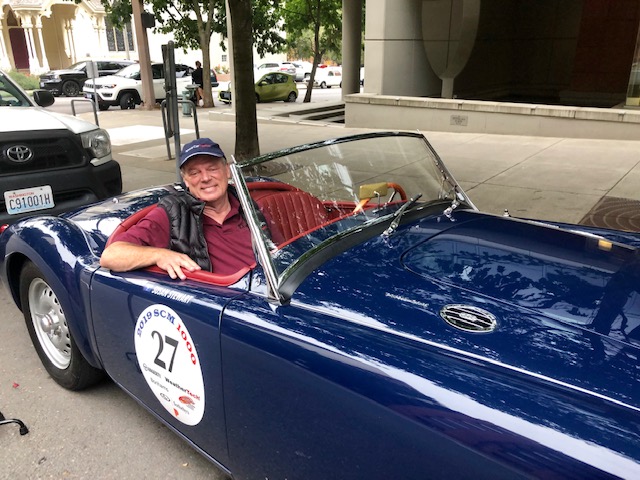
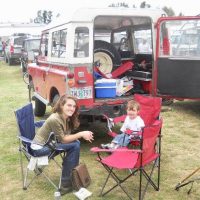
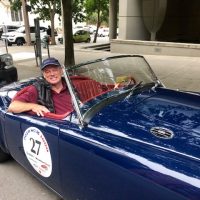
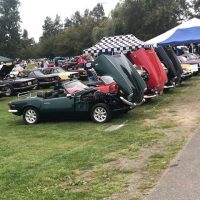
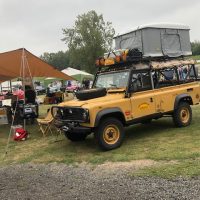
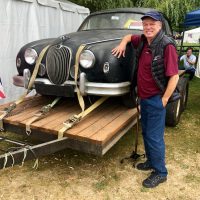
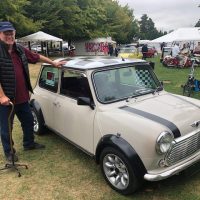
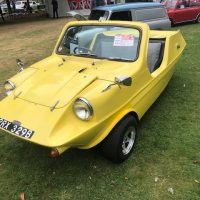
3 responses to “Keith’s Blog: Walking through Automotive History”
Great column. I love my British cars too. I have a 58 MGA not a twin cam but I did sneak an MGB engine in it. Also have a 72 MGB I’ve had since ’74 and passing it to my son who was born in ’72. I ‘ve had a Spitfire & a Lotus Europa too, but just love my MG’s.
Hi Keith, i just flew out to Wisconsin to spent the weekend with my Twin Cam which I purchased in 1966! The 4 year restoration will be done in 2020 but probably not in time for the 2020 SCM 1000 ,Rand E Bailey ( of Shelby fame) is the doing the resto and he just finished 2 matching “orange” spitfires to better than new! Also saw Hal Keck’s 65 427 championship winning Cobra store there..fun weekend go over the Twin Cam’s details and seeing the finished chassis with body sitting next to it ,would post pics if could..hopefully soon you will be sitting on the other side soon,all the best Chuck Coli SCM’r. since 1996
Glad you made it to the ABFM! I missed it this year, dangit. I have a dilemma. I can’t decide whether to sell my perfect early 1967 Jaguar E-Type Roadster that’s never been in the rain, or just go for it and try for entry in next year’s SCM 1000. What to do, what to do…